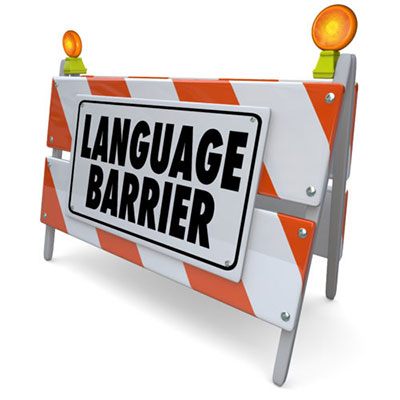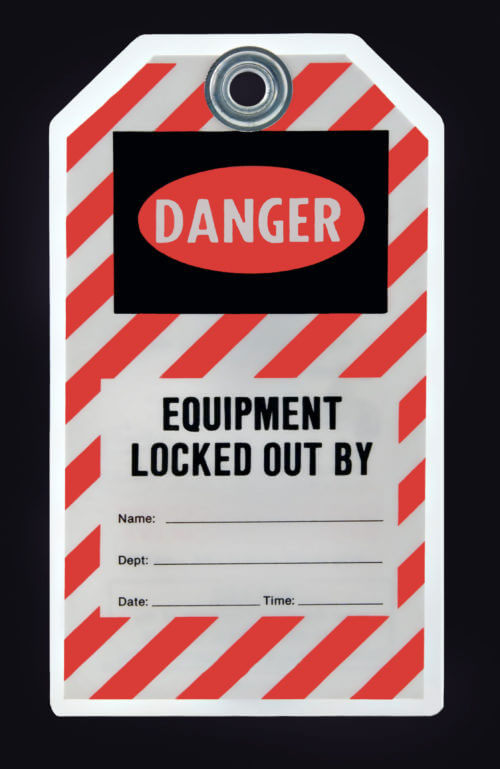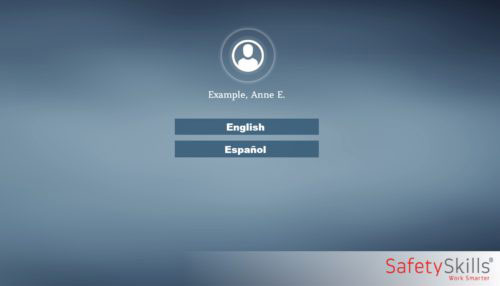The importance of native language safety training
Hispanic and Latino workers have the highest workplace fatality rate of any group, nearly 50% higher than the overall rate. What’s more, their rates of occupational injury are on the rise, even as those rates fall among nearly all other groups. These same trends can be seen in other populations with high numbers of limited English proficient (LEP) workers, including immigrant populations, and are largely attributed to language barriers and a lack of appropriate employee training. This is a major concern for industries that employ large numbers of LEP workers, such as construction, agriculture and service industries.
Occupational injury rates highest among LEP workers

Many studies have shown that Hispanic and Latino workers have significantly higher rates of workplace injuries and fatalities than other groups, particularly foreign-born Hispanic and Latino workers. Other foreign-born groups also have elevated injury rates. Unfortunately, it is hard to tease out exactly what role English-language proficiency has in these statistics, but common sense and the worker’s own experiences tell us that LEP employees will face many additional challenges when it comes to workplace safety, particularly when they work in environments that are not set up to accommodate them.
NIOSH reports that “Language differences between immigrant workers and their supervisors and coworkers are one of the most frequently cited challenges companies face in promoting safety among immigrant workers.” The reasons are fairly obvious. According to the Urban Institute, nearly half of all foreign-born workers are LEP. 29% of immigrant workers who have been in the country for 20 years or more still can be classified as LEP. Many also have a low degree of formal schooling and have higher degrees of difficulty with technical language than conversational.
LEP workers report trouble understanding safety training
In a study conducted by the Center for Protection of Worker’s Rights (CPWR), in conjunction with OSHA, Spanish-speaking construction workers were polled about their experiences with health and safety on the job. They were also provided with a 10-hour training course conducted in Spanish, with Spanish-speaking trainers and Spanish-language versions of OSHA handouts and brochures. According to the report, most workers stated that “when they took other training in English, they did not understand a substantial amount of course content. They added that, even when they understood what was being said, they did not have the English language skills to ask questions or participate in discussions.”

The workers all felt that receiving training in their native language was helpful, and nearly all reported that they wanted more (and more effective) safety and health training delivered by Spanish-speaking trainers. “In response to open-ended questions, most of those interviewed said they faced substantial challenges when trying to understand what they were told at work.” They complained that supervisors and co-workers who did not speak Spanish were less willing to explain things to workers with limited English, and as a result they often told the workers to simply skip safety procedures.
Many of the workers were also able to point to examples of past onsite injury incidents they experienced which they felt were directly related to either not receiving proper training, or to not understanding the English-language training they did receive. Many involved workers who simply did not know the proper procedures or what PPE they needed. Others involved workers ignoring instructions given in English, because they did not understand what they were being told.
Not surprisingly, many companies find that the more abstract safety and environmental hazards are some of the hardest to convey to LEP workers. Hazards such as fires or falls are easy to understand, and easy to demonstrate using simple imagery. Invisible chemical hazards or complex safe work procedures can be much harder to explain without a shared vocabulary. Technical jargon also may not translate well, and workers with a low level of education may have difficulty understanding more complex or technical topics, even with proper translation.
Training in the workers’ native language is more effective
Very little research has been done into the efficacy of teaching safety in the learner’s native language versus a second language. Most of the research is focused on young LEP students in grade school, where teaching English proficiency is considered just as important as subject matter proficiency. These studies all seem to agree that students will learn the subject being presented more quickly and effectively if they are being taught in their native language, and instead focus primarily on how various techniques impact English language acquisition. Perhaps this is because the first point seems so obvious as to not merit study. Of course students will understand the content better if it is delivered in a language they can understand.
The few studies that have been conducted regarding occupational training for adults seem to bear out the common assumption. The CPWR study mentioned earlier found that after receiving the 10-hour OSHA training in Spanish, the construction workers “reported substantial changes in awareness and work practices.” They reported significant increases in the use of fall protection and PPE, said they were more aware of workplace hazards and more comfortable asking their supervisors to address them, and numerous other improvements.

Before the training, only 2% of the study group had ever read an SDS. After training that number jumped to 93%. Perhaps most importantly, all of the workers
reported that they now discussed health and safety with their coworkers on the job and were now aware of hazards they had not been aware of before, even with English-language training. “A 60-year old Cuban-born electrician in Florida who had worked in the U.S. for 23 years said, ‘After the training, I am more responsible and careful. I make sure that workers with not much experience know how to deal with dangers. I make them use PPE.’”
Studies done in the agriculture and hospitality industries showed similar results. Not only did workers who received training in their mother tongue report better understanding of and adherence to safety protocols, their employers also reported a decrease in injury incidents and a general improvement in efficiency and employee morale. The most dramatic impacts were found at companies that fully embraced and planned for their LEP workers, and provided bilingual training and educational materials along with other tactics such as language training for supervisors and employees, bilingual hazard communication programs, and cultural outreach.
Employee understanding is required under the law

In addition to being more effective, in many situations native-language training may be required by law. While OSHA regulations do not explicitly state that training must be provided in alternate languages at any particular time, OSHA has issued policy statements and letters of interpretation that make it clear that OSHA requires training to be provided in a manner that the employee can understand. According to a policy statement memo from 2010:
“It is the Agency’s position that, regardless of the precise regulatory language, the terms ‘train’ and ‘instruct,’ as well as other synonyms, mean to present information in a manner that employees receiving it are capable of understanding…In practical terms, this means that an employer must instruct its employees using both a language and vocabulary that employees can understand. For example, if an employee does not speak or comprehend English, instruction must be provided in a language the employee can understand. Similarly, if the employee’s vocabulary is limited, the training must account for that limitation. By the same token, if employees are not literate, telling them to read training materials will not satisfy the employer’s training obligation. As a general matter, employers are expected to realize that if they customarily need to communicate work instructions or other workplace information to employees at a certain vocabulary level or in language other than English, they will also need to provide safety and health training to employees in the same manner.”
Additionally, some OSHA training provisions include specific requirements that the employer ensure and verify actual comprehension of the material, not just completion of a training program. The lockout/tagout standard [§1910.147(c)(7)(i)], for example, requires the employer to “ensure that the purpose and function of the energy control program are understood by employees and that the knowledge and skills required for the safe application, usage, and removal of the energy controls are acquired by employees.” Failure to establish employee competency could leave an employer vulnerable to OSHA fines, not to mention possible employee injuries. Other standards such as bloodborne pathogens [§1910.1030(g)(2)(vii)(N)] require that employees be given opportunities to ask questions during training. This is another indication that comprehension is essential to fulfilling the training requirement.
Finally, OSHA’s General Duty clause provides an umbrella requirement that employers provide employment “free from recognized hazards that are causing or are likely to cause death or serious physical harm.” If language barriers are preventing an employer from meeting this general duty through proper training and hazard communication, that is a clear violation of the law.
Most jobs require training

Some employers are inclined to think that simple jobs are not necessarily hazardous, and have a tendency to place LEP employees into these roles in part because they feel less training is required. Nearly all job tasks will require at least some level of training, however. Every role and task should undergo a job hazard analysis, which will often uncover everyday hazards such as ergonomic risks from lifting, reaching, or repetitive motions, and fall hazards related to the use of ladders or maintenance of walking and working surfaces. The need for safety training over these everyday hazards should not be overlooked.
Even employees who experience very few hazards in their direct job duties will need at least some training over emergency procedures and how to respond to fires, spills, and other incidents in their work areas. In some cases, an LEP worker may actually require more training over these basics, because they may not be able to read or understand warning signs, labels and other workplace instructions. It’s imperative that all employees know how to identify hazardous areas, equipment and chemicals in the workplace, even if they don’t work with them directly, and that they understand the reporting procedures if they witness a safety incident. Finally, all employees need to understand their rights and responsibilities on the job.
Training needs to be more than a simple translation
Many employers and training content providers are content to simply translate the text of their English-language training into Spanish and provide that translation alongside or instead of the English text or narration. This bare minimum approach, however, reduces training efficacy and does not go far enough to enhance learner understanding. According to NIOSH, to be effective training efforts “must go beyond simple translations of existing English-language materials; the format, content and messages should be customized for the target audience.”
Inclusion of multi-media elements such as sound, imagery and interactivity are all proven to impact the overall learning experience. If these elements are not also translated, their impact is often lost. Workers involved in the CPWR study were asked how OSHA training courses and materials could be improved, and overwhelmingly they asked for Spanish-language videos, graphics and other supporting materials. Hands-on exercises, interactive training scenarios, and supplied reference documents should all also be provided in the learner’s native language, and in a vocabulary that can be understood.
Language skills training is also valuable

The CPWR study participants also requested qualified, Spanish-speaking trainers, not just translators who know the language but many not be familiar with the safety concepts involved, and may have trouble answering learner questions. In situations where textbooks or computer-based training is used, the training materials should be translated by experts, and employees should be provided opportunities to ask questions of skilled trainers who also speak their native language, just like their English-speaking counterparts.
Teaching workers to understand basic English concepts, such as the meaning of warning signs and common safety phrases, is also incredibly important. Similarly, it is beneficial to teach supervisors some basic occupationally-related phrases in the employees’ native language, so that they can better communicate with their workers. Having even one supervisor who is fluently bilingual can have a major impact on the health, safety and efficiency of LEP workers. Companies that have a consistent commitment to bridging communications divides and growing the language abilities of all employees have, on the whole, significantly better health and safety records, and notably higher customer and employee satisfaction rates, than companies that have no plan in place to accommodate LEP employees.
Finally, corporate safety culture is a major part of the equation. All employees, including those with LEP, need to feel comfortable reporting hazards or asking questions. Bilingual policy and procedure documents should be available, and when possible signs and labels should have bilingual information as well. The corporate culture should also be sensitive to the cultural differences among their workers, particularly cultural beliefs that might discourage workers from discussing hazard concerns with their supervisors, either because general safety concepts are not emphasized in their home country or because their native culture discourages employee complaints.
Online training can be an effective part of the solution

Online training courses have been shown to have significant advantages in many areas, particularly when it comes to occupational health and safety training. This remains true when it comes to providing training in languages other than English, as long as the training provider understands the needs of LEP learners and is equipped to rise to the challenge. E-learning products can make it easy to have the exact same training available in multiple languages, and the self-paced nature of most online training can be very beneficial for learners who are struggling with language and educational barriers.
When done correctly, online training can also provide learners access to subject matter experts who can answer their questions, and can be more easily kept up to date as regulations and industry recommendations change. The challenge is finding the high-quality options among a sea of lower-quality competitors. Always look for all of the same features you look for in quality English-language training, such as interactive elements and robust support options, and check to ensure that the alternative language options are fully translated and contain all of the same elements. Avoid “bilingual” training that is little more than an English-language course with closed captioning in another language, as this is proven to be not nearly as effective as a fully-immersive experience.
As the rates of foreign-born workers continues to rise in America, the rates of LEP workers is likely to rise as well. Differences in language, education and culture will always present a challenge for health and safety programs, but these challenges can easily be overcome with a little awareness and effort. The rising availability of training materials in languages other than English is providing training managers with a bevy of new tools, but it is still important for EHS departments to evaluate the efficacy of these training materials and to consider them only one part of a larger approach to providing effective training and supervision for all workers.


